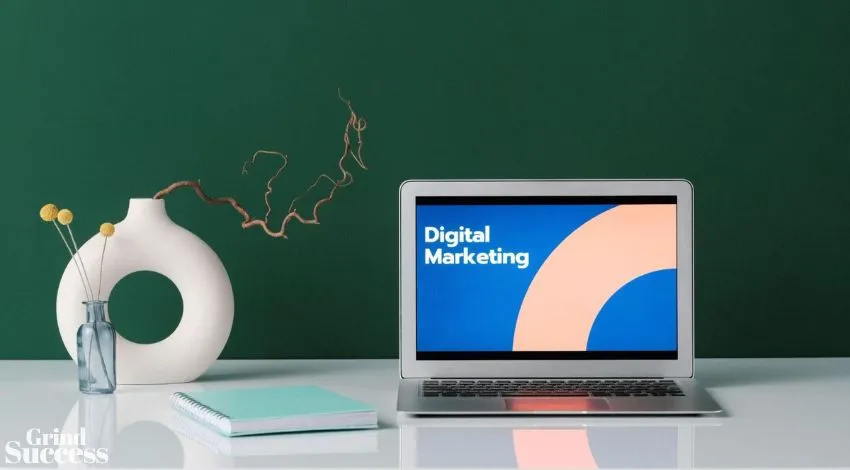9 Digital Marketing Tips Small Businesses Need to Follow in [2023]

Small businesses can find it challenging to navigate the digital landscape in [2023]. However, effective digital marketing can help companies stand out in the crowded marketplace, increasing brand awareness and profitability.
With constant changes in technology and consumer behavior, there are proven strategies that small businesses can use to achieve their marketing goals. Whether you’re just starting or looking to improve your digital approach, these strategies can offer you practical insights.
1. Focus on Mobile User Experience
Smartphones have made the world increasingly accessible from our hands. For businesses, this means a mobile-friendly website is not just an option—it’s a necessity. With many consumers browsing, shopping, and interacting through their mobile devices, companies must provide smooth experiences.
A clumsy or slow site can turn users off. To prevent this, invest time and resources in creating a responsive website design that adapts well across different screen sizes. Focus on fast load times and easy navigation to keep mobile users interested.
2. Use Local SEO
Local Search Engine Optimization (SEO) is essential for small businesses, especially if they have physical stores. Through local SEO, companies can reach out to a community of nearby customers searching for their products or services. One key aspect is the Google Business Profile.
This profile is more than just a business listing; it greatly affects rankings on Google’s local search and Google Maps. By optimizing this profile, businesses can enhance their visibility to nearby customers. Interestingly, the name you choose for your Google Business Profile can significantly impact local search results.
Choosing a name that contains keywords can improve your local search visibility. However, while considering a change, you must be careful. Knowing how to change the Google Business Profile name is vital. A mistake could lead to suspension, hindering your local SEO efforts.
3. Connect Through Content Marketing
In today’s digital age, engaging content is at the core of connecting with audiences. A well-managed blog, filled with relevant insights, is an attraction for new and returning visitors. Sharing updates and how-to guides equips readers with knowledge, showcasing your brand’s expertise in the field.
Moreover, covering industry news keeps your audience informed, positioning your business as a reliable source of information. Beyond just attracting readers, excellent content builds loyalty. Customers appreciate brands that offer valuable information, fostering trust.
4. Harness the Power of Email Marketing
Email marketing is still a powerful tool in the digital landscape. It’s not just about sending messages; it’s about creating value. A targeted email list becomes a treasure trove when subscribers receive content tailored to their preferences.
Going further, segmenting your audience lets you craft messages that connect personally with them. Add a touch of exclusive deals, and you’ll find your subscribers looking forward to your next email. But remember, personalization is key.
When customers feel recognized and valued, they’re more likely to stay loyal. Thus, when done right, email marketing doesn’t just bring traffic—it fosters loyalty, making it a priceless tool for businesses.
5. Optimize for Voice Search
Voice-activated assistants, such as Alexa, Siri, and Google Assistant, have changed how people search. No longer limited to keyboards, many now ask questions aloud. This change means that businesses need a new approach to SEO.
Typed searches often contain short keywords, while voice searches are more natural and descriptive. For example, instead of typing “best coffee near me,” someone might ask, “Where can I get the best latte nearby?”
Businesses should focus on long-tail keywords and create content around natural, conversational phrases to stay ahead. Adapting to voice search isn’t just about keeping up with trends; it’s about ensuring your business remains accessible and relevant in this changing digital era.
6. Utilize Social Media Platforms Effectively
Diving into the social media universe feels daunting for many businesses. Still, it’s a goldmine for connecting with customers. It’s essential to realize each platform attracts different groups. Say, if targeting teens, TikTok might work better than LinkedIn.
So, find out where your audience hangs out and invest there. Craft content that not only draws attention but also sparks conversation. Listen to your audience, reply to their queries, and actively engage in discussions.
Don’t forget, every platform has benefits — whether it’s stories, surveys, or real-time chats. Harness them to forge stronger bonds.
7. Collaborate with Influencers
The digital world has given rise to a new form of endorsement: influencer marketing. While celebrities have long endorsed products, today’s influencers are often everyday individuals with significant online followings.
Even small businesses can benefit immensely from these partnerships. Why? Because micro-influencers, those with more modest but highly engaged audiences, often boast genuine relationships with their followers.
When they speak, their audience listens, trusts, and often acts. You can tap into this trust by collaborating with influencers in your niche. The result? Enhanced brand visibility, credibility, and potentially more sales. An authentic voice can be the difference in a space crowded with ads.
8. Stay Updated with Ad Algorithms
Digital advertising is a changing game. Platforms, including Facebook and Google, often adjust their algorithms to improve user experience and offer advertisers better results. However, these changes can affect your campaign’s reach and effectiveness.
For businesses, it’s essential to not just set and forget ad campaigns but monitor and adapt to these changes. Being informed helps you ensure every penny of your ad budget delivers value. Diversify your approach, too.
Test various ad formats, from video clips to carousel ads, and analyze which ones catch your audience’s attention. Additionally, improve your audience targeting to focus on those truly interested in your products or services. Continuous learning and agility in advertising pave the way for better ROI.
9. Measure, Analyze, and Iterate
Entering digital marketing isn’t about intuition; it’s about making smart choices based on solid data. That’s where tools like Google Analytics come in handy. It provides insights into how your website is doing with its visitors.
You might wonder: do people stay on your website for long? Which pages interest them? Are they buying products or signing up? Such metrics guide your future campaigns. When a tactic isn’t working well, the numbers will show you.
Use that feedback to change and improve your strategies. Instead of sticking to old plans, always look for ways to grow. Adopt a mindset of constant evaluation, learning, and adaptation for improved marketing results.
Conclusion
Tackling digital marketing in 2023 isn’t just about following steps. Of course, local SEO, user-friendly mobile experiences, and engaging content are key. So are effective email drives, voice search nuances, and leveraging social platforms.
But that’s not the end. Businesses need to build real relationships, constantly update their approach, and avoid complacency. Being informed, welcoming new trends, and pushing boundaries is the game. Numbers give direction, but a keen sense is equally valuable.
At the core is your customer. Understand their pulse, predict their desires, and serve them well. Remember, flexibility combined with dedication carves out the road to being industry frontrunners.






